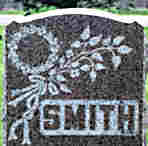Cemetery Symbolism
Cemetey Symbols and Their Meanings
This is a brief description of a few of the symbols you might see in O'Brien County cemeteries. You will find additional information on symbolism used in cemeteries in the book, "Where the Journey Ends."
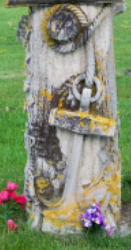
Anchor
Early Christians used the anchor as a disguised cross and as a marker to guide the way to secret meeting places. The anchor is a Christian symbol of hope.
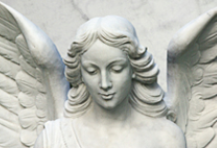 Angels
Angels
Angels are the agent of God, often pointing towards heaven. They are guardians of the dead and symbolize spirituality. Angels are shown in all types of poses with different meanings . Two angels can be named and are identified by the objects they carry: Michael, who bears a sword and Gabriel, who is depicted with a horn.
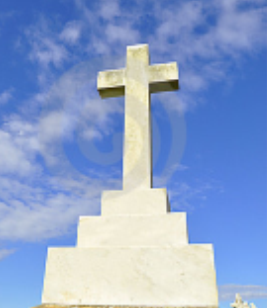
Cross
Sometimes mounted on three steps signifying “faith, hope and charity” or the Holy Trinity, the cross is an important symbol of the Christian faith. The cross has been used for religious and ornamental purposes since time immemorial.
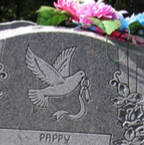
Bird
The bird represents the Holy Spirit or may be seen as a peace symbol The biblical allusion to the dove also suggests a connectedness with the earth, and its color, white, represents purity and spirituality.
 Draperies/Curtain
Draperies/Curtain
In the days when the body lay in state in the parlor, it was the custom to cover everything in black. Draperies, with fancy frills and tassels are more elaborate than a simple shroud. They allow the expression of mourning to linger after the body has been taken out the front door.
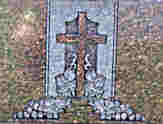 Grapes with Leaves
Grapes with Leaves
Grapes with leaves represent the Christian faith.
 Holly
Holly
People used to believe that holly bushes protected tombs and other monuments from lightning strikes.
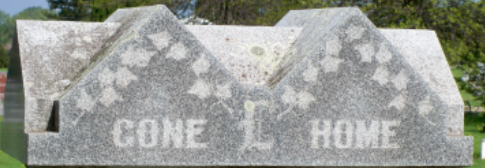 Ivy
Ivy
Because ivy stays green forever, it is said to symbolize immortality, eternal life and friendship.
Key
Keys stand for spiritual knowledge or, if held in the hands of an angel or saint, the means to enter heaven.
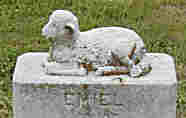 Lambs
Lambs
Lambs usually mark the grave of a child. The lamb stands for innocence. Christians also associate it with Jesus, the Lamb of God.
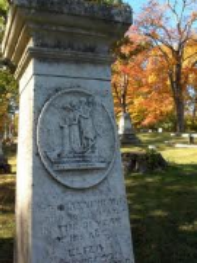 Lamp
Lamp
A lamp can be used to show knowledge, a love of learning, and the immortality of the spirit.
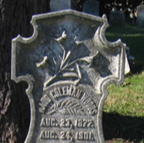 Lily
Lily
A lily represents innocence, purity, and resurrection. It is often associated with the Virgin Mary and resurrection and used on women’s graves. The use of lilies at funerals symbolizes the restored innocence of the soul at death.
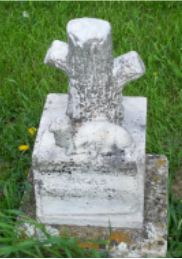 Oak
Oak
The oak tree is a sign of strength. It is believed to have been the tree from which Jesus Christ’s cross was made. In smaller pioneer cemeteries, it is common to place children’s graves near oak trees.
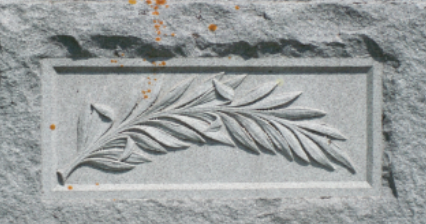 Palm
Palm
A palm branch represents a spiritual victory, success and eternal peace. It also represents Christ’s victory over death at Easter.
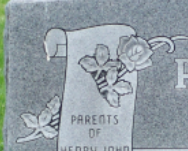 Rose
Rose
A rose commemorates love, beauty, hope, and unfailing love. The different stages of a rose's bloom are indicative of the person's age at the time of death.
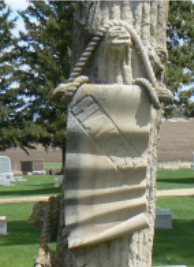 Scroll
Scroll
A scroll is a symbol of life and time. Both ends rolled up indicate a life that is unfolding like a scroll of uncertain length and the past and future hidden. The scroll can also suggest honor and commemoration.
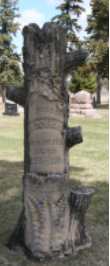 Tree
Tree
A tree may represent the all-covering love of Christ. It may also be seen as the tree of life.
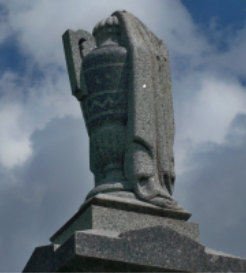 Urn
Urn
The urn is a symbol of mourning. The body of the urn can be seen as a vessel of the soul. It is sometimes coupled with drapery which also represents mourning.
Wreath
A wreath on a headstone can represent victory or redemption.
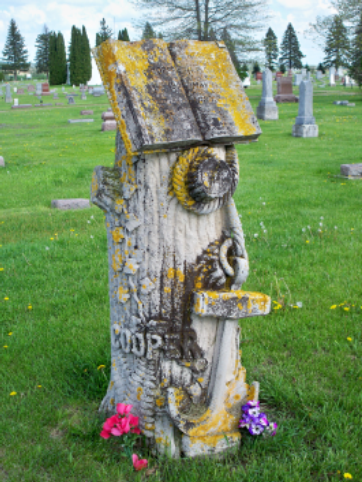
Sometimes many of these symbols can be seen combined on one headstone.
